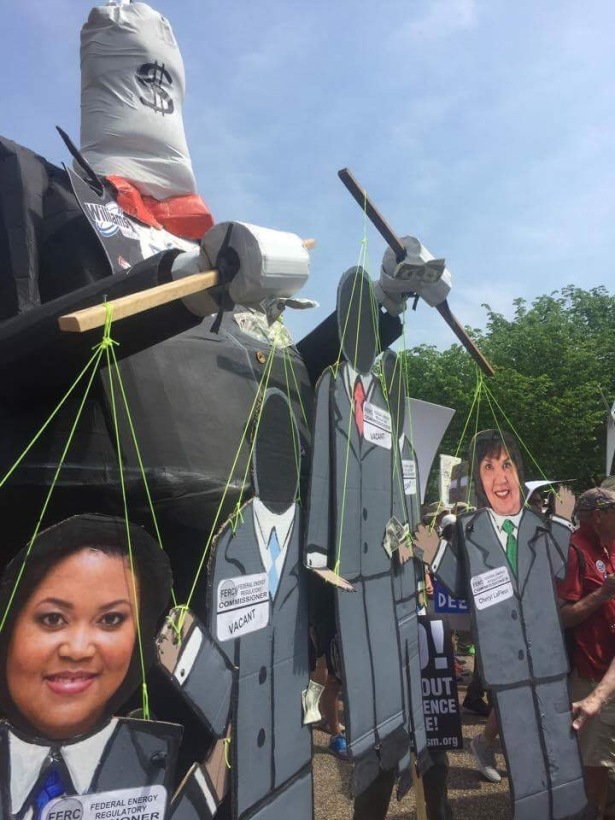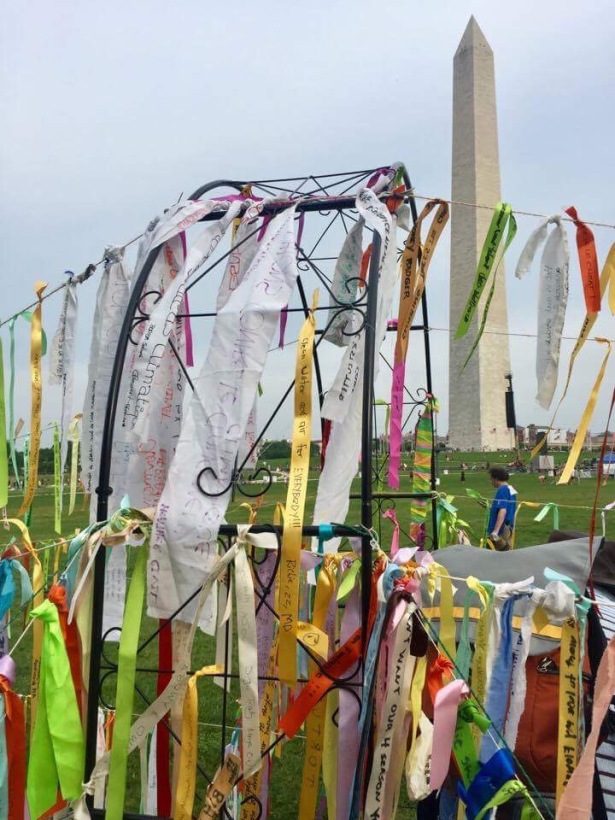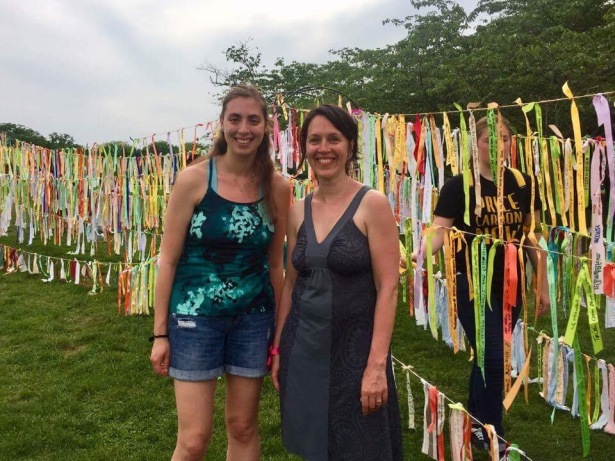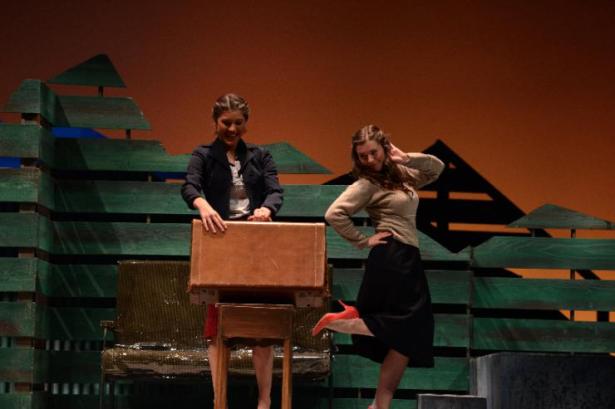This post comes to you from EcoArtScotland
How many lawyers does it take to make Scotland low carbon? How many artists? You might think it doesn’t matter – it’s the scientists, engineers and politicians who will make the difference.
But increasingly it is recognised that our addition to fossil fuels is as much cultural as it is infrastructural. Single occupancy car use is related to our western individualism as is the instant, always ‘on’ culture of 24/7 which leaves no ‘down time’ and means that everything is available always (including summer fruits in the middle of winter) . The overarching question throughout the two days whether explored philosophically, legally or in terms of journalism, was How have we constructed this culture?†Before we can change it, we need to grasp our entanglements.
Connecting with a Low Carbon Future, University of Stirling, Law and Philosophy Department 19th-20th April, 2017
This conference explored what the arts and humanities can offer the transition to a low carbon future. Until recently the issue has been dominated by science and technology but there is a growing recognition that transition is equally a social and cultural issue.
Co-ordinated by Professor Gavin Little, Department of Law and Philosophy, as part of a research project funded by the Royal Society of Edinburgh, the ambition for the event was high. The conference drew research papers from throughout Europe deliberately clustered into humanities disciplines that were closely related: law and politics; philosophy, culture and history; theatre studies and literature; visual arts, media and cultural studies.
The convenors framed a number of challenges. What might the humanities offer in terms of:
- identifying barriers to low carbon transitions
- achieving transition in ways that are ethically just
- understanding and influencing political power?
Researchers across all domains are accustomed to revealing to peers what they understand differently as a consequence of a process of inquiry – negotiating knowledge within a discipline. It is a kind of test in the company of others equally equipped with the relevant expertise to judge the level, depth and authority of what is claimed. We work within disciplines as knowledge domains and traditionally in the arts and humanities, as lone researchers.
This gathering challenged us to undertake a different approach.
Firstly, arts and humanities disciplines needed to open up their discrete and individualistic ways of knowing, to come together on a shared issue: transition to a low carbon future. The parallel sessions organised in the closely aligned discipline clusters revealed clearly how the issue of transition reaches to the heart of how we, as human beings, make meaning and confer value. At no point to my knowledge was the potential of arts and humanities research on the issue in question. Nonetheless it became clear that it would take time to figure out how to be effective in an area normally associated with science and technology.
Secondly transition necessitates dialogue across disciplines but frequently when such dialogues take place, they only operate at a very superficial level. This gathering encouraged us to encounter other ways of knowing and examine the assumptions and constraints of other knowledge practices (as well as our own). A better understanding of assumptions and constraints might forge new connections across the different disciplines representing the arts and humanities.
Thirdly, knowledge of transition needs practical and experiential as well as theoretical ways of knowing. This was possibly the least developed aspect. As academics we are accustomed to being experts that draw from human society, its materials and practices, for the purposes of analysis and to pass wisdom on as the end point of the research process. This linearity and its implicit power relationship needs to be rethought to construct modalities of co-researching with non academic partners. This was touched on through notions of action, activism and practice based research but not perhaps yet fully grasped in the discussions as a radically different research approach.
Across the two days we encountered rich narratives of research that revealed the degree to which the arts and humanities try to understand the future from the past. The rate and nature of climate change has in many ways confounded learning in this way – climate change provokes us to think outside of the limits of our current knowledge and imagine what might be. Putting the issue of escalating change vividly, Professor Jose Albelda Raga, artist and ecologist from the Polytechnic University of Valencia in his co-authored paper with Nuria Sanchez, cited the Global Footprint Network that had proposed that our current rate of consumption will shortly exceed 1.5 planets while we only have the knowledge to inhabit one.
For some, notably Julian Dobson from Sheffield Hallam, who has been researching institutions committed to low carbon cultures, we need to become less dependent upon what has gone before and carefully examine systems in relation to logics of value – a university will value education whereas a local government will value civic responsibility. Inevitably there will be discord but this can become a creative opportunity if we forgo a set of cultural values based in expectation (of a secured life style, within an economic systems based in growth and development) to values of hope. It is only by relinquishing expectation that we could ever countenance our own possible extinction. The juxtaposition of the values represented by, on the one hand, expectation and on the other, hope is particularly challenging. One is focused on ‘what we have’ and the other on ‘what we might need’…
Professor Janet Stewart, University of Durham, delivered the first keynote. She framed the complexities and sheer difficulties of the issues of a low carbon future by evidencing how since 19th century industrialisation, metaphors of extraction had become hardwired into our everyday thinking, locking us into particular ways of imagining ourselves in the world. These both reveal and conceal the implications of fossil fuel dependence.
 Facade of the Vienna Museum of Technology
Facade of the Vienna Museum of Technology
Stewart explored how photography for example is materially tied into the oil industry even though this is not explicitly acknowledged. It is also the main medium through which we are trained to see and celebrate extractive processes, for example in museum displays that draw on earth sciences. She referenced the recent development of energy displays in Vienna’s Museum of Technology. In various seductive ways oil culture and fossil fuel dependence in the 21st century had become ‘hidden from plain view’. We pretend, for example, that digital communication is in some sense immaterial, or at least drawing on ‘clean energy’, while in fact the storage and transfer of digital data is causing significant environmental problems.
Stewart’s keynote offered a number of important insights that were revisited across the two days, principally the recognition of how difficult it is to escape from current ways of thinking and acting. We are consistently reinforcing what Stewart termed ‘extractive seeing’ as a cultural regime and find it hard to escape the control that such a regime exercises. We ‘mine information’ and ‘read deeply’. To move away from this type of control, we need to think about ‘decarbonised seeing’ to begin to displace ‘extractive seeing’ and to come to the surface in reading the world.
Dr Pietari Kappa, University of Warwick, resonated the gap between subject matter and material practices in the film industry. Film producers might draw attention to the need for a low carbon future through the content of a film narrative but rarely produced film following low carbon practices. A much quoted example was the Mad Max film series, a dystopian narrative about a post oil culture that has been produced through conventional high carbon consumption. The whole industry is rife with contradiction and in some cases, forms of delusion. He placed ICT technologies at a carbon footprint of 3 per cent which equates with flights.

Other presentations (notably Louise Guibrunet, University of London, and her exploration of the informal labour of refuse collectors in Mexico City) emphasised the importance of contradiction as a research tool and that meaning cannot be abstracted out of and away from the context of experience. The standoff between local government in Mexico City and an informal, but essential, public service of waste collection helped her to grasp the social, cultural, economic and political issues of waste pickers in a particular suburb of Mexico City. Echoing Julian Dobson’s point about discord in civic life, she pointed out that the Mexican government, unlike other areas of Latin America, could not formally recognise the important work of waste pickers because such work was illegal. This locked in the problem of escalating waste in the city centre. Arriving at shared meaning involves taking on perspectives that might radically differ from our own, not as a process of measurement or aggregation but as an encounter with difference that at some point requires resolution to move on, even if that resolution is to live with the contradiction.
 Informal Waste Pickers in Mexico City
Informal Waste Pickers in Mexico City
In this respect the significance of practice outside of the academic institution, formed an important issue within some of the sessions, but perhaps insufficiently. This issue was revisited in the plenary. In this presentation Dr Dominic Hinde, University of Edinburgh, an environment correspondent working globally, emphasised the need to draw together the practice of journalism with research practice to ensure that a topic as pressing as the Anthropocene did not disappear from view. Journalism as a practice was in chaos economically and politically. Reporting the Anthropocene demanded a practice that was not caught up in capitalism. It needed to be a research practice that was decolonised, e.g. by forming global networks of mutually supportive researchers/practitioners.
The role of the imagination appeared in many guises. Without imagination it would be impossible to think ‘time’, to conceive a time long before human existence or, as we currently understand the future, long after such existence has ceased. Imagination and language, working in the contexts of particular interests, make visible and also conceal what we think to be ‘true’ or ‘real’. Camille Biros and Caroline Rossi, Université Grenoble Alpes, have undertaken to analyse the corpus of the United Nations and a selection of NGOs to track and define justice through these texts, using particular software. The research sets out to map the different interests at work in full knowledge that the least responsible are the most effected. It also reveals that justice is largely defined from the perspective of human self- interest. It is worth noting perhaps that this focus runs counter to recent developments to grant legal status, ‘personhood’, to aspects of ‘nature’ such as New Zealand’s Whanganui River, sacred to the Maori people.

In introducing the plenary session, Professor Little explored the challenges of interdisciplinarity that occur in opening up new research domains such as Energy Humanities and Environmental Humanities. He stressed the value of discipline specific knowledge, its rigorous evolution and identifiable expertise. He re-iterated Joe Moran’s notion of inter-disciplinarity – it challenges old disciplines to interact and contribute expertise to a common practice. He drew a distinction between radical and moderate forms of collaboration where the former attempts to cross significant boundaries such as literature and hard sciences, risking superficiality and the latter has a more moderate, but potentially more profound ambition to interact with expertise that is more alike and by implication, less superficial e.g. politics and media. Hence the conference was structured in relation to close discipline alliances. Gavin Little made a powerful case for why issues such as a low carbon future cannot be left to science and technology alone as they demand a tectonic shift in human thought and value systems.
I share the concern to avoid superficiality, the tendency particularly in science/art collaborations to bolt the arts onto science in a purely illustrative function. It is interesting to note how rarely artists, for example, collaborate with disciplines that are close to them, preferring instead to make alliances with scientists. This is evident in the practice of the Harrisons, ecology artists, that our own paper*, co-authored with Chris Fremantle, addressed. Our point was to develop a framework for understanding the contribution the arts could make to transition. We looked at the early work of Helen Mayer Harrison and Newton Harrison, founders of the art and ecology movement. In particular we focused on the way in which their approach constructs dialogue across disciplines (including the sciences), contexts (local/global), constituencies (institutions, individuals, organisations) focused on a very particular ecological issue – the food chain of catfish, the ecological interdependence between algae and brine shrimp. In other words their practice begins with a very local observation from which a conversation is generated that involves whoever can support, problematize or imagine the implications of single instance of organic life for planetary well-being.
The Harrisons frame questions, for some of which there is no known methodology. They engage the imagination of multiple contributors in speculating on the implications of certain hard won insights that emerge through shared inquiry. Alongside this kind of speculative imagination that draws rigorously on evidence based research, there is practical wisdom – knowledge and experiences of place and dwelling in everyday life. They show how the arts, and by extension the humanities, draw together rigour with participation /collaboration, imagination with data and its interpretation. Arguably all these are essential to facing a future that will be completely different from the past and present.
In other words climate change and the move towards a low carbon future, it would appear, is pushing us in the arts and humanities to move quickly and in multiple directions – to move beyond a love of well honed skills/methods to become immersed in issues as they appear in life, in places, with individuals and communities, to see ourselves as part of the materiality of experience and to develop our research from a proactive, if not activist, position.
In the plenary, Nuria Sanchez made a radical proposal for developing the discussion out of her experience of delivering an innovative interdisciplinary Diploma in sustainability, ecological Ethics and environmental education at the University of Valencia, led by Professor Jose Albelda . She proposed that we start with a question core to transition, using the conference to generate a paper by working in interdisciplinary teams that would be presented as the end point of a conversation. This proposal, completely alien to most arts and humanities academics would on the one hand require teamwork and the negotiation of the boundaries of several disciplines and on the other speed, for she proposed that the paper might be written in a couple of days.
What are the wider implications of Nuria’s proposal?
It would mean centring our questions on matters of the environment whether or our disciplines were accustomed to framing such questions i.e. questions that at the point of posing them, may not be possible to answer from within a single discipline.
It would mean listening deeply to forms of expertise beyond our own discipline and figuring out the relationship that that discipline’s way of knowing bears to our own, encountering and embracing difference as well as discord as a creative, generative force.
It would mean rethinking rigour. This is currently invested in selecting and applying method appropriately but may came to mean understanding the degree to which method itself shapes and limits what can be known. It would mean developing skills in constructing relations (across disciplines as well as non academic partnerships), skills of empathy and of the imagination.
It would mean rethinking the dichotomy between ‘pure’ ‘primary’ research and ‘functional’ ‘urgent’ research, questioning the assumption that primary research is not functional or pure research is not urgent. In other words new ways of thinking about life on earth through literature might be recognised as as urgent as understanding bark beetle infestations.
It would mean rethinking economies of research, Ecology and economy share the same root of ‘oiko’ meaning ‘home’. Instead of research feeding capitalist economies i.e. research that makes money and addressing the side effects that follow, this approach demands that we rethink how to manage resources in sustaining life to narrow the gap between rich and poor as part of taking take care of the environment.
Notes
* Abstract:Â How do artists meet the challenges of a low carbon future? The poetics of ecology art practice
Anne Douglas and Chris Fremantle
We are accustomed to analysing and evaluating the work of art in ecology in terms of a ‘one-off’ project or intervention, as subject matter more than process. We argue that it is the poetics of a practice taken as a whole that is key to understanding how artists address the challenges of a low carbon future.
A practice is simultaneously a belief about what can be known (an ontology) and a form of action in the world. Ontologies underpin discipline specific knowledge. They are powerful. They draw on existing knowledge (epistemologies) and follow explicit approaches (methodologies) in order to create a position of authority through consensus, conformity and verification within each discipline’s community.
In contrast, an artist’s practice is put together/ made by an individual. It evolves over time, subjectively. The artist as ecologist works with the complexity of specific experiences and contexts, open to divergent, contradictory views and values. Managing complexity is important to ecology’s tracing of relations and interdependencies within natural systems.
Drawing on the work of Helen Mayer and Newton Harrison as a foundational practice in art and ecology since the early 1970s, we will establish a framework for understanding how the arts in ecology enable us as critical citizens to take, rather than defer, responsibility to science or governments. The Harrisons’ practice is driven by carefully framed questions that enable participants to judge what is important/unimportant in a particular situation. They deploy a metaphor for sharing knowledge and understanding. ‘Conversational drift’ forms and informs slowly like a glacier, gathering momentum while creating the energy for change.
About EcoArtScotland:
ecoartscotland is a resource focused on art and ecology for artists, curators, critics, commissioners as well as scientists and policy makers. It includes ecoartscotland papers, a mix of discussions of works by artists and critical theoretical texts, and serves as a curatorial platform.
It has been established by Chris Fremantle, producer and research associate with On The Edge Research, Gray’s School of Art, The Robert Gordon University. Fremantle is a member of a number of international networks of artists, curators and others focused on art and ecology.


















